This year’s Women’s History Month blog post focuses on another big event that happens every spring: The Oscars! Below, librarians Anne Causey and Cecelia Parks share books, films, and archival material related to women involved in this year’s Oscar-nominated films and lesser-known women actors and filmmakers through Hollywood history.
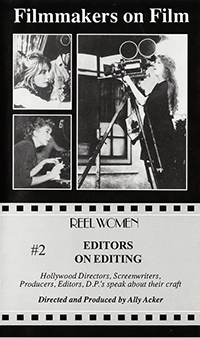 “Filmmakers On Film: 2, Editors on Editing” (2014), directed by Ally Acker
“Filmmakers On Film: 2, Editors on Editing” (2014), directed by Ally Acker
Two of this year’s nominees for Best Film Editing are women: Thelma Schoonmaker, for “Killers of the Flower Moon”, and Jennifer Lame for “Oppenheimer.” This documentary features interviews with other prominent female film editors. These editors are part of a long tradition of women editors; though women have historically been excluded from many filmmaking roles, the editor role has been more open to them.
View “Filmmakers On Film: 2, Editors on Editing” in Virgo.
“Contemporary Black Women Filmmakers and the Art of Resistance” (2018), by Christina N. Baker
Only five Black people were nominated for Oscars this year, two of whom are women. All were nominated for acting awards. Very few Black women have been nominated for non-acting Oscars, and even fewer have won. In her book, Baker analyzes the portrayal of Black women by Black women filmmakers such as Ava DuVernay, Tanya Hamilton, Kasi Lemmons, Gina Prince-Bythewood, and Dee Rees to explore how they create and recreate images of Black femaleness in their work.
View “Contemporary Black Women Filmmakers and the Art of Resistance” in Virgo.
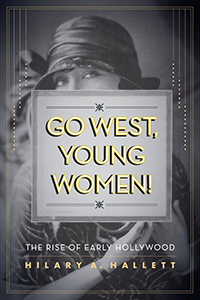 “Go West, Young Women!: The Rise of Early Hollywood” (2013), by Hilary Hallett
“Go West, Young Women!: The Rise of Early Hollywood” (2013), by Hilary Hallett
Hallet focuses on early Hollywood and its appeal especially to women. Migrants, especially women, flocked to Hollywood, enticed by the dream of interesting work, romantic adventure, and the chance to reinvent oneself. In 1920, Hollywood had more women than men, unlike other western cities. Soon, women made up most of the audience and it followed that films catered to them. Without particular education or training, a woman could dream of becoming a Mary Pickford or a Gloria Swanson or any number of other women who had influence and power as writers, directors, actresses, producers, and publicists.
View “Go West, Young Women!: The Rise of Early Hollywood” in Virgo.
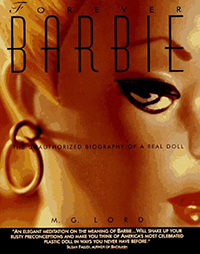 “Forever Barbie: The Unauthorized Biography of a Real Doll” (1994), by M.G. Lord
“Forever Barbie: The Unauthorized Biography of a Real Doll” (1994), by M.G. Lord
“Barbie,” directed by Greta Gerwig, has been one of the top films of 2023 and is nominated for multiple awards, including Best Picture. Lord’s “Forever Barbie” tells the story behind the doll that inspired the film, charting Barbie’s development, success, and her intersections with popular culture and feminist thought.
View “Forever Barbie: The Unauthorized Biography of a Real Doll” in Virgo.
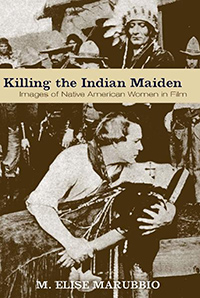 “Killing the Indian Maiden: Images of Native American Women in Film” (2006), by M. Elise Marubbio
“Killing the Indian Maiden: Images of Native American Women in Film” (2006), by M. Elise Marubbio
Lily Gladstone is nominated for Best Actress in a Leading Role for her role as Mollie Burkhart in “Killers of the Flower Moon,” which is about a series of murders in the Osage Nation in the 1920s. In “Killing the Indian Maiden,” Marubbio examines the portrayal of Native American women in films that preceded “Killers of the Flower Moon” and argues that Native American women have historically been depicted in self-sacrificial roles in which they align themselves with a white male hero and die.
View “Killing the Indian Maiden: Images of Native American Women in Film” in Virgo.
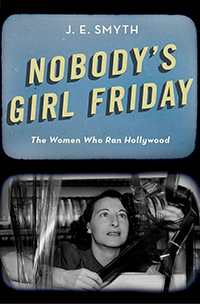 “Nobody’s Girl Friday: The Women Who Ran Hollywood” (2018), by J. E. Smyth.
“Nobody’s Girl Friday: The Women Who Ran Hollywood” (2018), by J. E. Smyth.
Smyth challenges the stereotype of studio-era Hollywood as an all-boys club that disenfranchised women. She sets out to prove that there were instead diverse opportunities open to women in the Hollywood of the 1930s and 1940s, enabling women to work as executives, directors, producers, writers, film and sound editors, make up artists, etc. It meant that Hollywood was actually ahead of many other industries in regard to women’s work and equality — women had significant power and influence in the film industry.
View “Nobody’s Girl Friday: The Women Who Ran Hollywood” in Virgo.
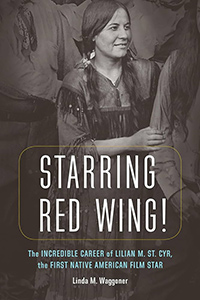 “Starring Red Wing!: The Incredible Career of Lilian M. St. Cyr, the First Native American Film Star” (2019), by Linda M. Waggoner.
“Starring Red Wing!: The Incredible Career of Lilian M. St. Cyr, the First Native American Film Star” (2019), by Linda M. Waggoner.
This biography is about one of the earliest Native American women to star in the early film era. Between 1908 to 1917, she was in at least 70 silent films. Her best known roll was that of Naturitch in Cecile B. DeMille’s first film, “Squaw Man.” Red Wing, born on the Winnebago Reservation in Nebraska (officially Ho-Chunk) was a “writer, prop maker, costume designer, a cultural consultant and her own incredible stunt woman.”
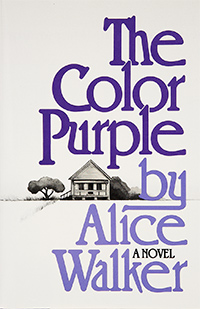 “The Color Purple” (1982), by Alice Walker
“The Color Purple” (1982), by Alice Walker
Danielle Brooks is nominated for Best Actress in a Supporting Role for her portrayal of Sofia in the new musical film version of “The Color Purple.” The film is based on Walker’s 1982 novel, which tells the story of Celie, a young Black woman in early-twentieth-century Georgia. This Black queer classic won the Pulitzer Prize for fiction in 1983. Trigger warning: this book contains themes of sexual assault.
View “The Color Purple” in Virgo.
“Regeneration: a Romance of the South Seas” (1923), produced by the Norman Film Mfg. Company

Eight un-numbered, illustrations or “posters,” of this silent film are housed in UVA’s Special Collections Library. White film maker Richard Norman established his company in Jacksonville, Florida, and created several films starring all-Black casts. Regeneration was his most successful — watched by white and Black audiences alike. The only female in the cast, Stella Mayo, was promoted as the “Sensational Colored Screen Beauty.” Mayo was new to the film industry and dropped back into obscurity afterwards. Only one reel of the film exists today, at the Library of Congress, though a clip can be found online.
